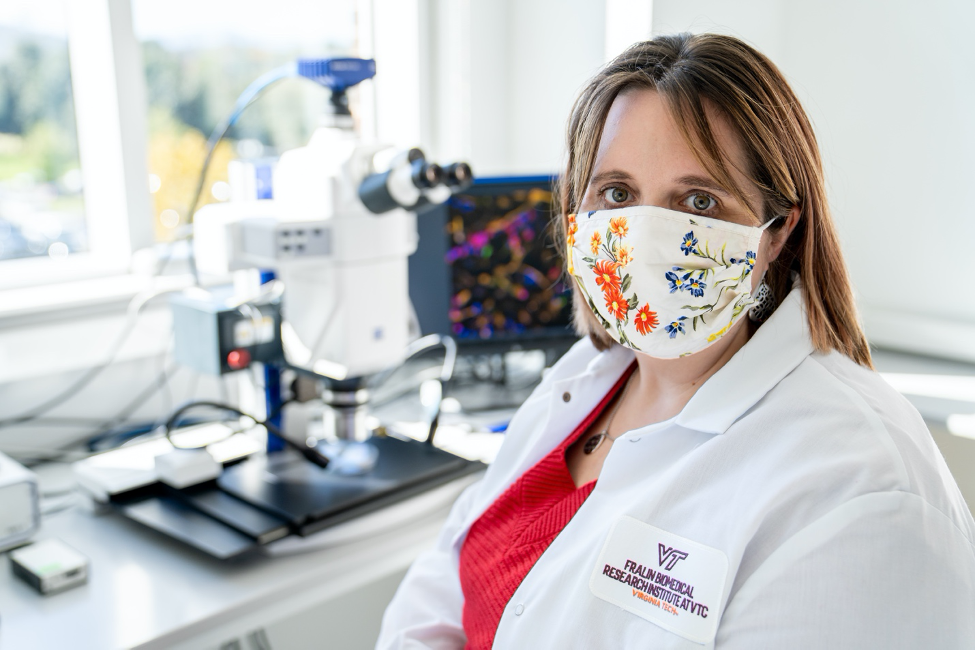Tracking fluid flow in tumors, tissues drives new Fralin Biomedical Research Institute at VTC scientist

As an undergraduate studying chemical engineering at Tulane University in New Orleans, near the heart of oil country, Jennifer Munson modeled how fluids move through pipes.
Five years later, she aimed that understanding at the human brain.
“The majority of our brain is water,” said Munson, an associate professor at the Fralin Biomedical Research Institute at VTC. “It just made sense to apply that kind of information.”
Today, Munson is a biomedical engineer and one of a handful of scientists examining how interstitial flow – the flow of fluids in the spaces surrounding cells within human tissues – can aggravate cancers, accelerate Alzheimer’s disease, and effectively deliver drugs.
“It’s kind of a force that’s always there,” Munson said. “Very few people are looking at how cells behave when you have fluid flow there. However, in our bodies, there’s always fluid moving around and through our tissues.”
Munson, who is also an associate professor in the Department of Biomedical Engineering and Mechanics in Virginia Tech’s College of Engineering, joined the Fralin Biomedical Research Institute’s primary faculty team this summer.
Munson’s lab develops tissue-engineered models that let the researchers study how fluid flows through and around cancerous tumors. She also developed a new way to use magnetic resonance imaging (MRI) to identify and track areas of fluid flow in and around brain tumors, including highly aggressive glioblastoma multiforme (GBM).
The fluid that flows around cells and through space between vessels in tissues is mostly water, with some proteins and sugars. A major purpose is to aid in the body’s immune response. When immune cells enter a tissue in response to a threat, they release large amounts of proteins and cytokines. Fluid flow helps to drain the proteins and cytokines away. When you cut your finger or twist your ankle and it swells, Munson said, that’s the fluid coming in to do its job.
To learn more, check out the whole article below.